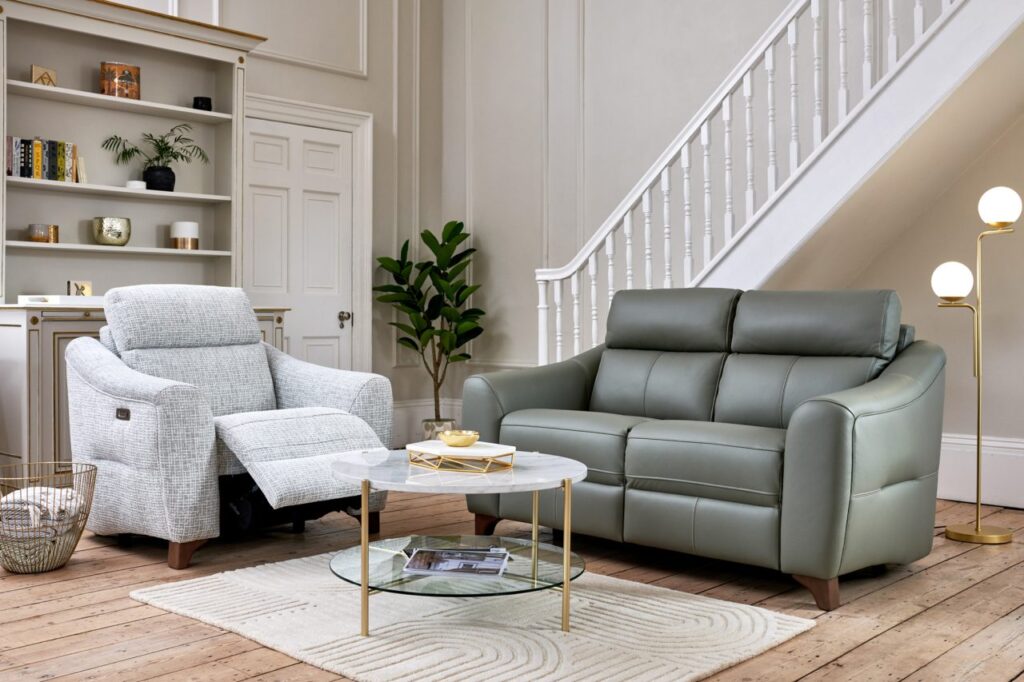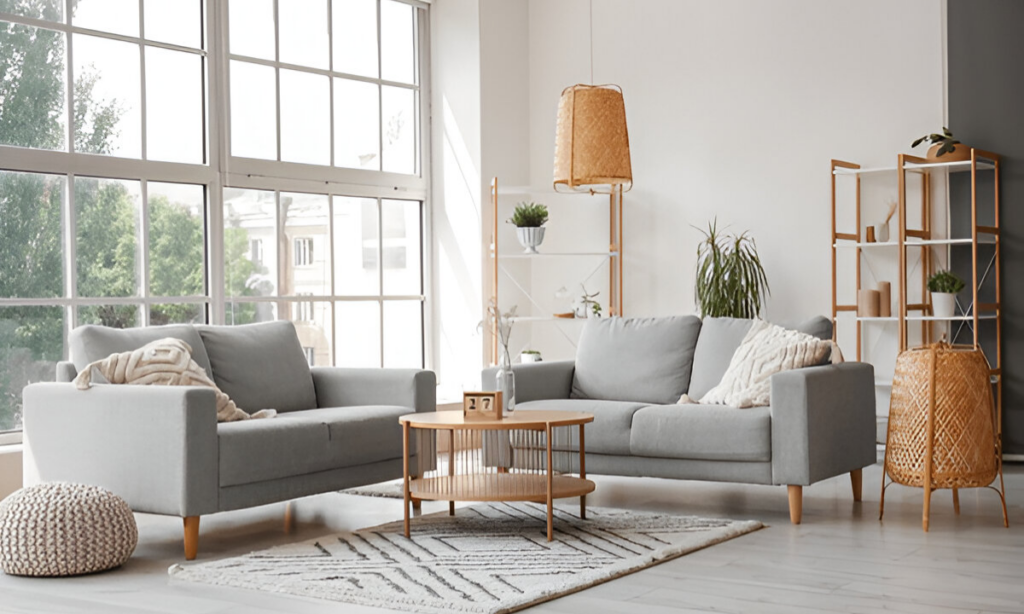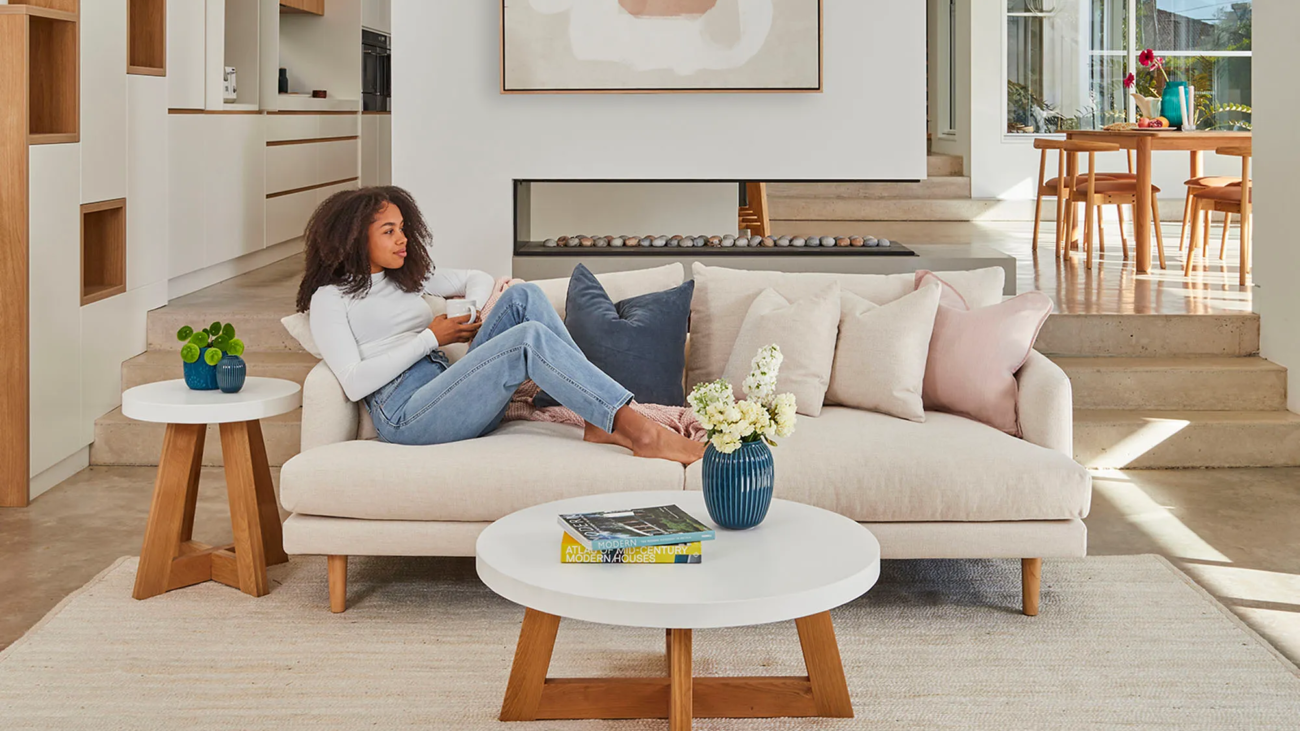Choosing a 3 seater sofa for your living room can be one of the most influential design decisions you make. It sets the tone for the entire space and reflects your personal style while providing comfort and functionality. To help you navigate this process, we will explore several crucial aspects to consider, from understanding your living room space to making the final decision.
Understanding Your Living Room Space
Before diving into aesthetics and styles, you need to assess the physical space where your large 3 seater sofas will reside. Understanding the dimensions and layout of your living room is essential for selecting a sofa that fits well and complements your environment.
Assessing the Size of Your Living Room
The first step in picking the perfect sofa is to measure your living room accurately. Use a measuring tape to determine the length and width of your space. Make a note of doorways, windows, and any architectural features that could affect placement.
Consider how much room you want around the sofa. Ideally, you should have at least 30 inches between the sofa and other furniture to allow for easy movement. If you have a smaller room, consider whether a narrower sofa could still provide adequate seating without overwhelming the space. Additionally, think about the height of the sofa in relation to other furniture pieces. A low-profile sofa can create an airy feel in a compact room, while a taller sofa can add a sense of grandeur in larger spaces.
Considering the Layout and Flow of Your Room
Next, think about the layout of your living room. Is it an open concept, or does it have distinct areas? This will influence where you can place your sofa and how many seating arrangements you might need.
Consider how the flow of traffic moves through the space. You want to ensure that the couch does not block pathways. A well-placed sofa can create a natural conversation area and enhance the overall functionality of your living room. Additionally, think about how the sofa interacts with other elements in the room, such as coffee tables and side chairs. Arranging these pieces in a way that promotes easy access and comfort can elevate the overall ambiance of your living room. You might also want to explore various configurations, such as an L-shape or U-shape, which can maximize seating while maintaining a cozy atmosphere.
Moreover, take into account the lighting in your living room. Natural light can dramatically change the perception of space, so consider how your sofa placement will affect light flow throughout the day. If your living room is filled with sunlight, you might want to opt for fabrics that are fade-resistant. Conversely, if your space tends to be darker, a lighter-colored sofa can help brighten the room and create a more inviting environment. Ultimately, the goal is to create a harmonious balance between style, comfort, and practicality in your living room design.

Defining Your Style and Comfort Needs
Once you understand your living room space, you can shift your focus to defining your style and comfort needs. Every homeowner has different preferences and requirements for their living rooms. It’s essential to consider not only the aesthetics but also how the space will be used on a daily basis. This means taking into account the activities you enjoy, whether it’s hosting gatherings, enjoying quiet evenings with a book, or spending time with family. Understanding these dynamics will help you create a living room that is both functional and visually appealing. Read more about defining your style at https://alert.mc.edu/2-10-expert-ways-to-design-her-style-now
Exploring Different Sofa Styles
There are countless styles of sofas, each offering its own aesthetic appeal. Popular options include modern, traditional, minimalistic, and mid-century designs. Understanding these styles will help you find one that aligns with your existing decor or sets a new trend in your home. For instance, a sleek, modern sofa with clean lines can create a striking contrast against a more ornate, traditional backdrop, while a plush, overstuffed sectional might complement a cozy, rustic setting beautifully.
Take the time to explore various styles online or in showrooms. Consider what speaks to you and how a particular design will fit into your overall vision for your living space. Don’t hesitate to mix and match styles; an eclectic approach can often lead to unique and personalized results. Additionally, pay attention to the materials used in the sofa’s construction, as they can significantly influence both the look and durability of your furniture. Fabrics such as velvet or leather can add a touch of luxury, while more casual materials like cotton or linen can create a relaxed atmosphere.
Prioritizing Comfort in Your Sofa Selection
While style is important, comfort should be your priority. Test different sofas in showrooms to assess the cushioning, firmness, and overall feel. Remember, you’ll want your sofa to be inviting and comfortable for relaxation and entertaining guests. Consider the height and depth of the sofa; a deeper seat may be perfect for lounging, while a shallower seat might be more suitable for a formal setting where conversation is key.
Also, think about how you plan to use your sofa. If you often enjoy movie nights with family or friends, you may want deeper seating and softer cushioning. For a more formal environment, a firmer sofa might suit your style better. Additionally, consider the maintenance of the materials you choose; some fabrics are more resistant to stains and wear, making them ideal for households with children or pets. By carefully evaluating both comfort and style, you can find a sofa that not only enhances your living room’s aesthetic but also meets your everyday needs.
Choosing the Right Material for Your Sofa
After you have defined your style and comfort needs, it’s vital to consider the material of your sofa. The fabric or leather you choose impacts not only the appearance but also the longevity and maintenance of the sofa.
Evaluating Durability and Maintenance of Materials
Different materials come with various levels of durability. If you have pets or young children, consider fabrics that are resistant to stains and wear. For example, microfibre and synthetic fabrics tend to be durable and easy to clean. These materials often feature protective coatings that repel spills and stains, making them ideal for high-traffic areas. Additionally, some brands offer sofas with removable, washable covers, which can be a game changer for busy households.
Leather is another great option for its elegance and durability, but it may require special care to maintain its appearance. Regular conditioning can help prevent cracking and fading, ensuring your leather sofa remains a stunning centerpiece for years. If you choose a lighter fabric, be prepared for more frequent cleaning and maintenance. Fabrics like cotton or linen, while breathable and comfortable, may show wear more quickly and can be prone to staining, so consider the trade-offs before making your decision. To learn more about the importance of durability and maintenance click here.
Matching Material to Your Lifestyle and Decor
Your lifestyle will significantly influence the choice of material. If you entertain frequently or have a busy household, opt for materials that can withstand wear and tear while still looking stylish. Performance fabrics, which are engineered for durability, often mimic the look and feel of more delicate textiles without sacrificing functionality. These fabrics can resist fading, stains, and even odors, making them perfect for those who love to host gatherings.
Moreover, consider the overall aesthetic of your living room. A sleek leather sofa may clash with a cozy, rustic decor, while a soft linen fabric may enhance a bohemian ambiance. Ensure the material complements your existing furniture and decor elements. For instance, if your space features warm wood tones and earthy colors, a rich, textured fabric in a complementary hue can create a harmonious look. Additionally, think about the tactile experience; a plush velvet sofa can add a touch of luxury and comfort, inviting guests to sink in and relax, while a woven fabric may add an artisanal touch that aligns with a more eclectic style.

Selecting the Perfect Color and Pattern
Color and pattern selection is where you can truly personalize your sofa. It serves as an anchor in your room and will influence the overall mood.
Coordinating Sofa Color with Room Palette
Start by evaluating the existing color palette of your living room. A neutral-colored sofa can offer versatility and allow for both bold and subtle accent colors in cushions and decor.
On the other hand, if you prefer a statement piece, consider brighter hues or patterns that stand out against your walls and accessories. Always keep in mind the balance between your sofa and other colors within the room.
Using Patterns to Add Visual Interest
Patterns can add depth and visual interest to your living space. Choose geometric patterns for a modern look or floral designs for a more traditional feel. Stripes or checks can also lend a timeless aesthetic.
However, be cautious not to overpower the room with busy patterns. It’s wise to balance patterned sofas with solid-colored accessories to maintain harmony in your living space.
Making the Final Decision
After taking all these factors into account, you’re ready to make your final decision. This step involves consolidating all of your preferences and thoughts into a cohesive choice.
Balancing Budget and Quality
Your budget will play a crucial role in your selection. Ideally, you want to find a high-quality sofa that fits within your financial constraints. Set a realistic budget that considers both the purchase price and any additional costs, such as delivery and setup.
Don’t forget to read reviews or ask for recommendations to ensure that you are making an informed decision about the quality of the sofa you choose. A well-constructed sofa designed to last will save you money in the long run.
Considering Delivery and Installation Options
Finally, consider how the sofa will be delivered and installed in your home. Measure your doorways and hallways to ensure your chosen sofa can fit through them. Some retailers may offer delivery services, which can be extremely helpful for large or cumbersome pieces.
Confirm installation options to ascertain whether your sofa will require assembly. Knowing what to expect can alleviate stress when the big day arrives.
In conclusion, picking the perfect 3 seater sofa involves a blend of understanding your living space, defining your style, choosing the right material and color, and making a final decision that balances comfort, quality, and budget. With thoughtful consideration of these aspects, you can find a sofa that enhances your living room and brings joy for years to come.
Related : 3 Seater Sofas: Stylish and Practical Choices for Every Home

